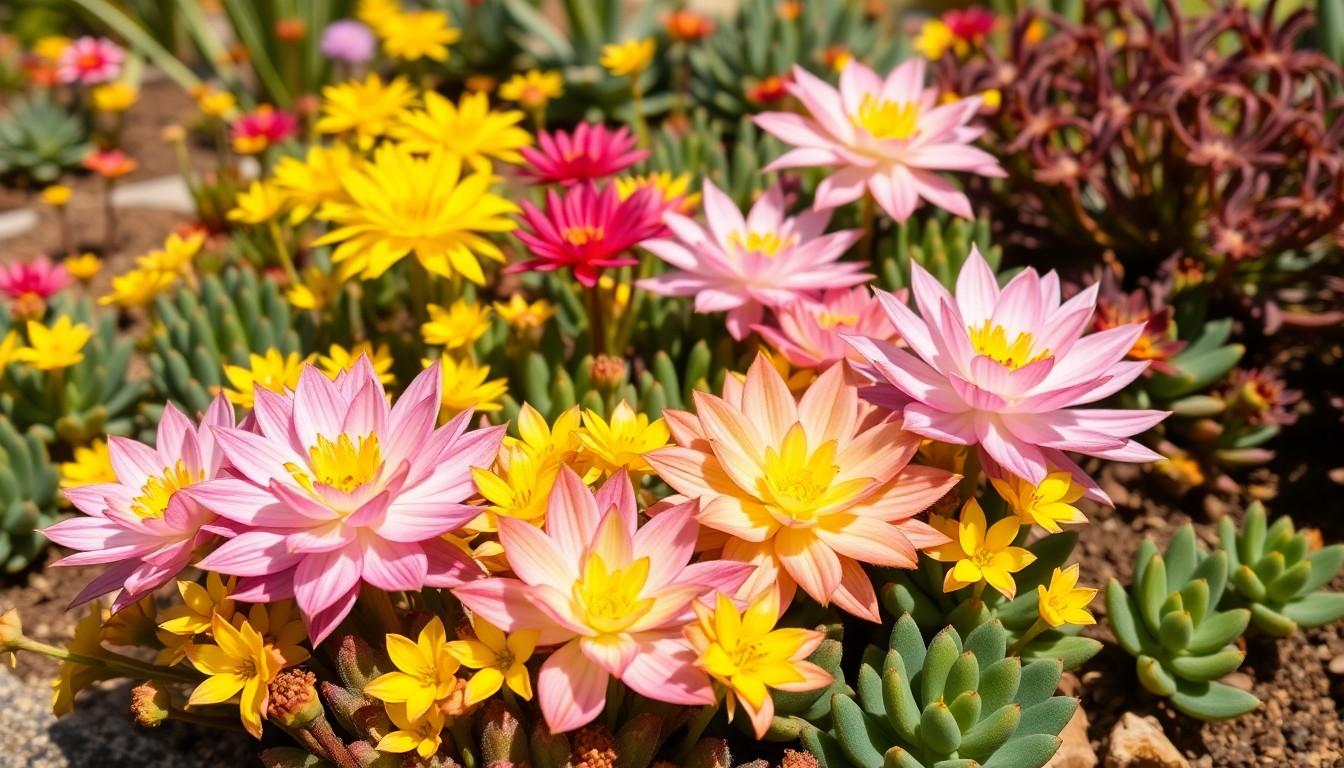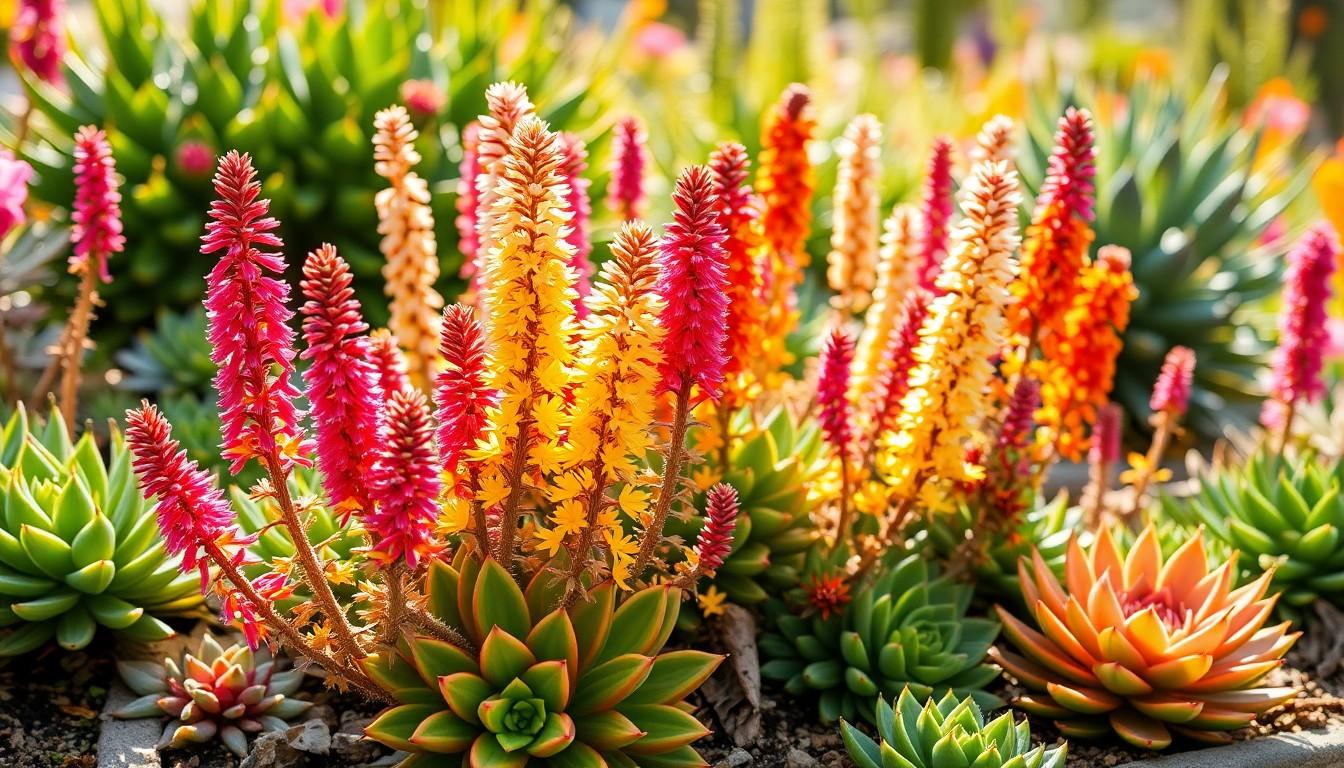Succulents are the introverts of the plant world—low-maintenance and perfectly content to chill in their pots. But wait! When they decide to bloom, it’s like a party no one saw coming. Those unassuming little plants transform into vibrant displays of color, catching everyone off guard. Who knew your prickly friend had such a wild side?
In this article, we’ll dive into the enchanting world of blooming succulents. From the surprising reasons behind their floral displays to tips on how to encourage those stunning blooms, readers will discover that these plants aren’t just pretty faces. They’ve got a flair for the dramatic too! Get ready to embrace the unexpected and learn how to make your succulents the life of the garden party.
Overview Of Blooming Succulents
Blooming succulents capture attention with their unexpected and vibrant flowers. They exhibit unique blooms that often surprise those who cultivate them. Many people associate succulents primarily with their varied foliage. However, these plants showcase impressive floral displays at certain times of the year.
Successful blooming depends on several factors including species, care, and environment. Some succulent varieties thrive in specific conditions, making it crucial to understand individual plant needs. For instance, Echeveria and Sedum are known for their prolific blooms. Both need adequate sunlight, well-draining soil, and proper watering routines to flourish.
Temperature plays a significant role in triggering blooms. Many succulents require a specific temperature range to initiate flowering. During the growing season, warmer temperatures encourage many types to produce flowers. Additionally, stress factors like drought can induce blooms in some species as a survival mechanism.
Cultivators often benefit from observing the growth cycles of their succulents. Regular care routines promote healthy growth, equipping plants to bloom. Fertilizing during the growing season boosts nutrient availability, directly affecting flowering potential.
Understanding flowering patterns can enhance the aesthetic appeal of gardens and indoor spaces. Gardeners often experiment with arrangements to create dynamic displays of color. They can extend the blooming period by managing light and moisture effectively.
By focusing on specific succulent species and adopting proper care techniques, it’s possible to increase the likelihood of witnessing these captivating floral occurrences. Blooming succulents not only add beauty but also intrigue to any collection or landscape.
Popular Types Of Blooming Succulents

Certain succulent varieties are known for their vibrant blooms, providing delightful surprises for gardeners. Two of the most popular types include Echeveria and Sedum.
Echeveria
Echeveria species produce stunning flower spikes that emerge from rosettes. Colors range from bright yellows to vivid pinks, depending on the variety. Optimal conditions for Echeveria include bright, indirect light and well-draining soil. Regular watering during the growing season supports healthy growth but should be reduced during winter dormancy. Fertilizing with a balanced succulent blend aids in nourishing these plants. Notable species like Echeveria elegans and Echeveria runyonii are appreciated for their prolific blooms, captivating gardeners with their beauty.
Sedum
Sedum varieties showcase an impressive array of colors and shapes in their flowers. From yellow to pink and purple hues, these blooms attract pollinators, adding life to gardens. Sedum thrives in full sunlight and requires minimal watering, making it ideal for beginner gardeners. Well-draining soil ensures that the roots do not rot. The flowering period often extends from late summer to early fall, with Sedum spectabile and Sedum morganianum recognized for their striking floral displays. Regular pruning encourages fuller growth and more blooms, enhancing the overall garden aesthetic.
Care Tips For Blooming Succulents
Caring for blooming succulents involves specific attention to their unique requirements. Maintaining optimal conditions enhances their floral displays.
Light Requirements
Bright, indirect light serves as a foundation for blooming succulents. Though some species tolerate partial shade, most thrive with exposure to 6 to 8 hours of sunlight daily. Shedding light on Echeveria, this genus benefits from direct sunlight, especially during the growing season. Meanwhile, Sedum varieties flourish under full sun, which promotes vibrant blooms. Adjusting light exposure based on seasonal changes helps sustain flowering. Avoid placing succulents in dark areas, as insufficient light may hinder blooming. These plants perform best when positioned near windows or light sources, allowing for optimal growth.
Watering Guidelines
Watering practices significantly impact the health of blooming succulents. Allowing the soil to dry out completely between sessions encourages robust root development. Typically, watering once every 1 to 2 weeks suffices during the growing season, while frequency decreases in winter months. During flowering, maintaining consistent moisture without over-saturation is essential. Echeveria prefers slightly more water than Sedum, which thrives on minimal moisture. Ensuring well-draining soil prevents root rot, a common issue for succulents. Monitoring plants closely for signs of stress, such as shriveling leaves, signals the need for moisture adjustments.
Benefits Of Blooming Succulents
Blooming succulents provide numerous advantages, enriching both indoor and outdoor spaces. Their vibrant flowers not only add aesthetic value but also offer practical benefits.
Aesthetic Appeal
A burst of color enhances landscape designs. Succulents like Echeveria and Sedum bring elegance through diverse flower shapes and shades. Gardeners appreciate how these blooms create visual interest throughout the growing season. As succulents flower, they attract attention and encourage admiration from passersby. Plants can serve as focal points in gardens, allowing for striking contrasts against green foliage. Displaying succulents in pots or containers further adds charm to patios and balconies. A variety of blooming succulents provides continual beauty with minimal maintenance.
Air Purification
Succulents contribute to improved air quality. They absorb carbon dioxide while releasing oxygen, enhancing breathable air indoors. Specific plants, including Aloe Vera and Echeveria, filter common pollutants effectively. Many people notice fresher air in rooms filled with these flowering plants. Incorporating blooming succulents in living spaces promotes wellness and relaxation. Research shows that indoor plants can uplift mood and reduce stress levels. Growing these succulents serves an ecological purpose, positively impacting the environment.
Conclusion
Blooming succulents offer a delightful surprise for gardeners and plant enthusiasts alike. Their vibrant flowers not only enhance any landscape but also contribute to a healthier environment. By understanding the specific needs of various succulent species and providing the right care, anyone can enjoy these stunning displays.
Embracing the unique beauty of flowering succulents encourages creativity in gardening. With a bit of patience and attention, these introverted plants can transform gardens into colorful havens. Whether it’s through thoughtful arrangements or optimal care routines, the journey of cultivating blooming succulents is rewarding and enriching.

